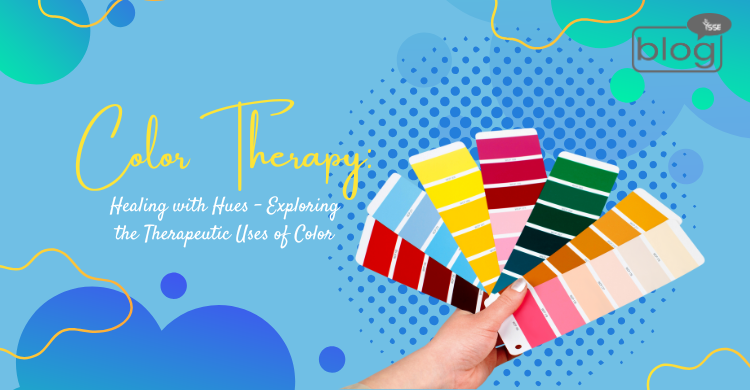Color therapy, or chromotherapy, is an alternative holistic practice that deals with the therapeutic use of color to affect mood, emotions, and even physical condition. This ancient practice understands colors beyond aesthetic appeal to innate energies, which surely will affect our mental, emotional, and physical conditions.
The Science of Color Theory
Color therapy is based on the belief that all colors have a special wavelength and frequency that interact with a person’s energy centers or chakras. Colors are believed to influence the energy of each chakra and are thus considered to be linked with specific ones. Individuals may shift into different emotional and physical states as the frequency of the color resonates with the energy field of their body.
Effects of the Color Theory
Color therapy further aligns these chakras with specific colors and the physical and emotional functions associated with them. Red energizes orange creativity, yellow clarity, green balance, blue soothes the mind, indigo for intuition, and violet is considered to aid in spiritual growth. Believed to act upon aspects of our being, from physical vitality and emotional stability to clarity of mind and spiritual enlightenment—through the interaction between these chakras, colors influence us in many ways.
Benefits enlightenment—
Color therapy, or chromotherapy, has a number of benefits that can really help improve one’s emotional and physical well-being. Advantages are:
1. Stress Reduction: The colors blue and green are associated with calmness and, therefore, work to reduce anxiety and create a tranquil atmosphere. Integrating these colors into daily life can induce relaxation and reduce stress levels.
2. Mood Elevation: Vibrant colors, such as yellow and orange, evoke happiness and dispel sadness or depression. Cheerful colors around a person help to lift their mood.
3. Pain Reduction: Some colors, especially green, it is believed, possess analgesic properties through which physical discomfort is reduced and the person is soothed. This may make color therapy a potential complementary treatment for chronic pain conditions.
4. Improved Sleeping: Soft colors, such as dark blue or mild green, will help make bedrooms relaxing to sleep in and reduce the effects of insomnia. On the other hand, bright or harsh colors affect sleep patterns negatively.
5. Increased Creativity and Concentration: The brighter colors are said to inspire mental activity and creativity and should, for that reason, be used in working areas where concentration is required.
Applications
While not replacing conventional medicine, color therapy is increasingly becoming an important complement. It finds its place in holistic healthcare settings, naturopathic clinics, integrative medicine practices, wellness centers, spas, and even mental health facilities.
Color therapeutic applications are multifarious, including the induction of stress reduction through the use of calming blues and greens, mood elevation by energizing yellows and oranges, pain management by stimulating reds and soothing purples, sleep improvement by relaxing blues and lavender, and emotional healing by balancing green and compassionate energy in pink. Color therapy is also finding its way into skin treatments, where certain colors can be applied to different skin conditions.
Making it Your Color Therapy Session
The effectiveness of color therapy can vary greatly from person to person. To make your own experience as specific and personal as possible, identify first those aspects of your life in which you would want changes. Try blue in your surroundings, clothes, and meditation activities while paying more attention to how they really make you feel. You may want to track your reactions by journaling them. You would definitely be able to get professional guidance and suggestions regarding chakras through meeting a color therapist.
Color Therapy in Everyday Life
One need not make radical changes in life to incorporate color therapy. A few simple changes will suffice.
Home: Paint your walls with colors that can help create an atmosphere of tranquility, such as soft blues, or energizing, like vibrant yellows.
Clothing: Wear colors that help elevate your mood or soothe you, depending upon your needs.
Lighting: Use colored bulbs or filters in your lamps to create an atmosphere that is relaxing or stimulating.
Visualization Techniques: Practice guided imagery about yourself surrounded by healing colors during meditation sessions.
Conclusion
Color therapy is one of the means of restoring mental and physical being through systematic usage of color. Knowing the psychological impact of a certain hue enables the person to manipulate his environment to effect healing, reduce stress, and generally make life more pleasant. Color therapy is one of the most available methods for people who want holistic support in the course of seeking well-being, given that alternative therapies are increasingly sought after.
To read more blogs, click here.
Writer
Nayela Binte Azad
Intern, Content Writing Department
YSSE

